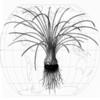| Publication Type: | Journal Article |
| Year of Publication: | 2015 |
| Authors: | A. Troia, Greuter W. |
| Journal: | Willdenowia |
| Volume: | 45 |
| Pagination: | 391-403 |
| Abstract: | The three Isoetes species recorded from Thessalia (Thessaly) in N Greece by Haussknecht, in 1899, under the names I. setacea, I. heldreichii, and I. phrygia, were reassessed using megaspore and microspore ornamentation in addition to macromorphological features. “Isoetes setacea” is not the SW European I. delilei to which the name I. setacea was generally misapplied, nor “I. echinospora” as it has been called due to a misunderstanding, but a so far undescribed species here named I. haussknechtii; it has not been found again in Haussknecht’s locality but has recently turned up in Peloponnisos and the E Aegean Islands. I. heldreichii, described from Haussknecht’s gathering, is apparently extinct. The record of I. phrygia was based on misidentified I. gymnocarpa. Even so, contrary to prevailing opinion, Haussknecht was justified in raising Boissier’s I. histrix var. phrygia to specific rank; genuine I. phrygia has recently been discovered in Kriti (Crete). The inventory of Greek Isoetes now comprises seven species, of which I. phrygia and I. todaroana are newly recorded here. Greek specimens studied are cited for all of them, and a key for their identification is presented. The names I. heldreichii and I. phrygia are typified. |
